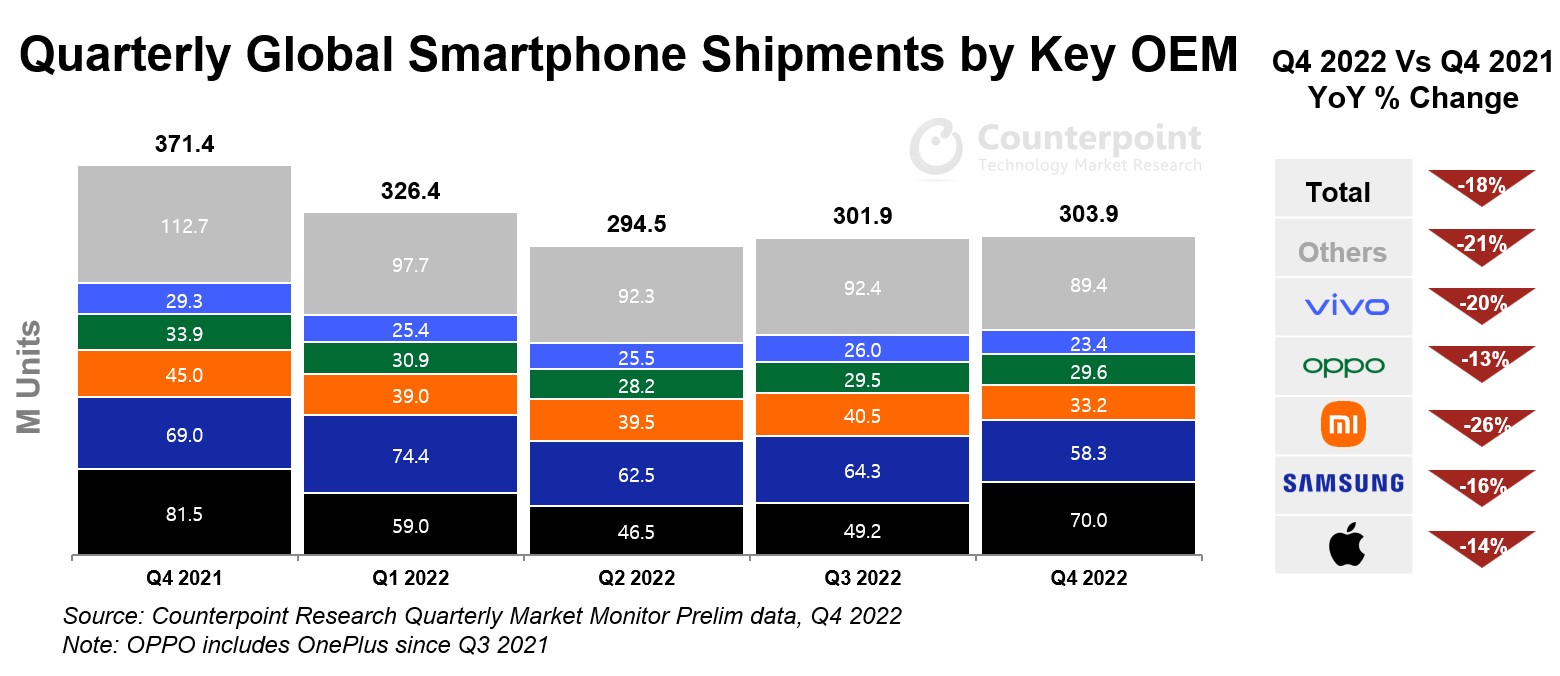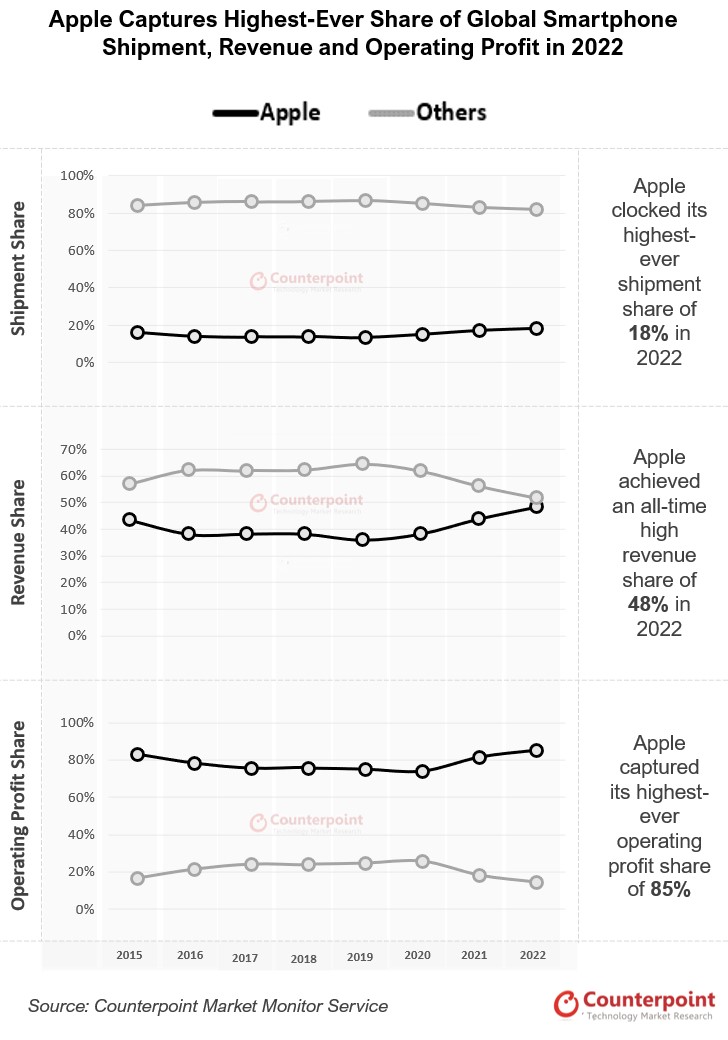Trends
2022 smartphone shipments lowest since 2013; Apple regains top spot
The global smartphone market remained under pressure in Q4 2022 with shipments declining by 18% YoY to the lowest level for a holiday quarter since 2013, even as they grew by 1% QoQ to 303.9 million units, according to the latest research from Counterpoint’s Market Monitor service. Shipments for the full year 2022 also declined to 1.2 billion units, the lowest since 2013.

Commenting on overall market dynamics, Senior Analyst Harmeet Singh Walia said, “The war in Ukraine, inflationary pressures, economic uncertainty and macroeconomic headwinds kept the consumer sentiment weak in 2022 while smartphone users reduced the frequency of their purchases. The smartphone market remained under pressure in the fourth quarter of 2022 as the cost-of-living crisis, shortage in the labor market and a decline in consumers’ purchasing power resulted in double-digit declines in the shipments of each of the top five smartphone players.”
Consequently, global smartphone revenue and operating profit also saw a decline, although to a lesser degree than in shipments. An increased mix of premium phone offerings by major OEMs drove up the overall average selling price (ASP) by 5% YoY in 2022. The 9% decline in revenue, while lower than in shipments, resulted in annual smartphone revenues amounting to $409 billion, the lowest since 2017. A larger decline was prevented by a 1% growth in Apple, the only top five smartphone OEM to do so.

Commenting on Apple’s performance, Research Director Jeff Fieldhack said, “having proficiently managed its production problems, Apple was able to weather a year already marred by economic and geopolitical turmoil better than other major smartphone players. It is iPhone Pro series continued performing well and its share of iPhone shipments could have been even higher if not for the production issues caused by the COVID-19 breakout at the Zhengzhou factory, which produces the vast majority of Pro series volumes. As a result, some Pro series volumes got pushed to January.”
Consequently, its shipment, revenue, and operating profit declined YoY in Q4 2022. However, it outperformed a struggling smartphone market in terms of shipment, revenue, and operating profit growth, in turn achieving its highest-ever shares of 18%, 48%, and 85% in these metrics respectively, in 2022.
Apple also benefited from the premium segment, its primary constituency, being less severely affected by the economic and geopolitical uncertainties that marred the year. Moreover, mature smartphone users are now choosing premium devices that last longer.
Elaborating on the ‘premiumization’ trend, Research Director Tarun Pathak said, “premiumization can also be seen within the Android ecosystem and is being led by Samsung with its foldable smartphones. As a result, Samsung was the only top five OEM besides Apple to see a 1% growth in revenue, even though its shipments declined by 5% in 2022 and operating profit declined by 1%. The performance of its flagship smartphones was stronger than market projections. Nevertheless, with a smaller profit decline than the overall smartphone market, its operating profit share increased slightly to 12% in 2022.”
Chinese smartphone players suffered from domestic lockdowns for much of the year in addition to facing global economic and geopolitical difficulties. As a result, the shipments of Xiaomi, OPPO*, and vivo fell by more than 20% each. Despite offering premium phones at aggressive margins, Chinese brands are yet to make headway in the premium market and have not been able to capitalize completely on Huawei’s decline. Unsurprisingly, then, their revenue as well as operating profit saw double-digit declines.
CT Bureau














You must be logged in to post a comment Login